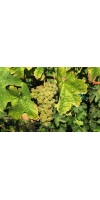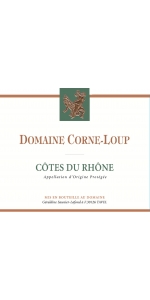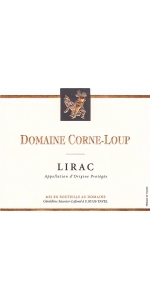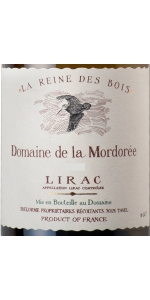Grenache Blanc

Grenache Blanc is a white wine grape most famously grown in France’s Rhone Valley region, but originated in Spain. In Spain, Grenache Blanc is still used in Rioja and Navarre. In addition, it is the 4th largest crop grown in France and is used in the Chateauneuf du Pape blends. Grenache Blanc is relatively easy to grow as it resists drought naturally, is generally hearty, and ripens fairly early. Climates with warm days and cool nights are ideal for Grenache Blanc and will bring out intensity and depth. It can be a strong contender as a single-variety wine, displayed in wines produced along the California Central Coast, but its characteristics make it an ideal blending element. With high alcohol and low, but crisp, acidity, Grenache Blanc will bring balance to any blend. The nose will often display as green apple, mandarin orange, mineral, and peach. In some cases, Grenache Blanc will have a slight finish of licorice. When blended with Roussane, Grenache Blanc will give flavor and length and its acid will balance the rich sweetness.
Corne Loup Cotes du Rhone Blanc is made from 50% Grenache Blanc, 20% Clairette, 15% Roussanne and 15% Viognier.
The wine has a pale straw color with brilliant reflection. In the nose, it displays great aromatics, mainly citrus fruit. The palate is well balanced, with a lot of finesse and persistence.
Delicious when paired with seafood (seashell and fish). It is also great by itself as an aperitif.
Corne Loup Lirac Blanc is made from 40% Grenache Blanc, 35% Viognier and 25% Marsanne
No Oak
The wine boasts a light yellow and brilliant color, fine floral and fruity notes. It is fat, ample and powerful in the mouth with a lot of freshness.
Mordoree Lirac Blanc Reine des Bois is made from Grapes : Grenache 35 % Clairette 25 % Viognier 10 % Roussanne 15 % Marsanne 10 % Picpoul 5%>
Color : green gold
Aromas : white fruits, peach, apricot, pear, violet.
Palate : rounded, long finish, highly flavoured.
Ageing Potential : 4-5 years.
Surface : 4 Ha. Yield : 35 Hl./Ha. Vineyard age : 30 years Terroir : Clay / chalk with pebble stones. Harvest : by hand Vinification : skin maceration and direct pressing with temperature control. Fermentation : oak barrel fermentation for 25% of the total volume
Pairs well with appetizers, fish, seafood.
Review:
"Iconic grapes of 35% Grenache, 25% Clairette, 10% Viognier, 15% Roussanne, 10% Marsanne, and 5% Picpoul from 40-year-old vines make up this organic Southern Rhône white. A floral bouquet of white tea and jasmine make their designs on a defined slate mouthfeel. Lime pops with a tart center, along with notes of peach and gingerbread on a keen, edgy finish."
- The Somm Journal (Feb/March 2022), 94 pts
- back
Selected Options
Grape Types
Categories
Pricing
Countries
Regions
Grape Types
Wineries
Organic/Free Shipping
Awards:
- Gold, 92 Points: Sommelier Challenge
Tasting Notes:
This dry Rosé bursts with strawberry, grapefruit, and cherry aromas. On the palate, it is nicely balanced with a refreshing and bright acidity and a soft and creamy finish.
Sokol Blosser 'Orchard Block' Pinot Noir 2021 is made from 100 percent Pinot Noir.
VINTAGE HIGHLIGHTS
2021 was the 2nd warmest growing season we have ever seen since 2015. We also got to add a new term to the dictionary: "Heat Dome". Three straight days of triple digit temperatures in late June breaking heat records for the Willamette Valley. Bud break started like usual in the middle of April. We had the driest March through May that the Willamette Valley has seen through 128 years of record keeping! Bloom also appeared on time in early/mid June. While late June brought the “Heat Dome”, our grapes made it through thanks to bloom being finished at all our sites and there still being soil moisture, so they grew like crazy over those three days of hellish temperatures. While July and August turned out to be exceedingly hot and dry, September arrived with little rain which that allowed us to fully ripen the grapes. The hot and dry summer made for fruit that was extremely clean, resulting in excellent fermentations. All in all, mother nature gave us something to be grateful for on our 50th anniversary.
WINEMAKING
The grapes were carefully hand harvested from the Orchard Block (on our Estate vineyard) on September 25th. The fruit was hand sorted to remove any flawed bunches and de-stemmed, half went directly into 3-ton stainless steel fermenters and the other half went in to oak upright fermenters. Fermentation took place over 10-14 days using ambient yeast with punchdowns for cap management. After the long, cool fermentation, the wine was pressed off at dryness and then barrel aged for 16 months in 100% French oak barrels with 17% new oak.
WINE PROFILE
Our 2021 Orchard Block Estate Pinot Noir has bright notes of red cherry, red currant, and a touch of nutmeg on the nose. On the palate, the fruit continues with red cherry, raspberry, and red currants followed by a subtle hint of clove. This is a delicate Pinot Noir with bright acidity with a medium finish.
PAIRINGS
Orchard Block Pinot Noir pairs with a classic roasted turkey, creamy cacio e pepe, and the Oregon favorite, wild mushroom risotto.
Review:
Powerful floral aromatics as violets introduce deep blue fruits, forest floor, and a note of iodine. This old 2.5ha plum and cherry orchard produces wines of depth, elegance and restrained power. The palate is lushly fruited with ripe red raspberries, clove and turned earth. The finish is elegant and long-lived.
Decanter 93 Points







